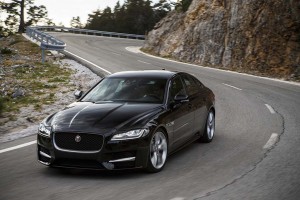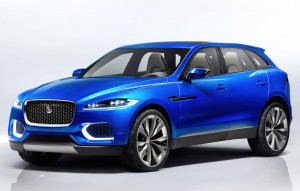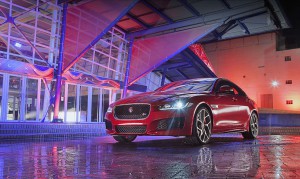
Jaguar aims to navigate some tough challenges with new products like the XE, and redesigned models such as the 2016 XF shown here.
It can be difficult separating perceptions from reality. Just ask the folks from Jaguar, the British maker still battling an image of poor quality even though it routinely scores among the best in the auto industry.
That’s one of the key reasons, among several, why Jaguar officials believe they’ve struggled to grow at the same pace as their key competitors – or even as quickly as partner brand Land Rover. So, the British luxury carmaker is launching a major campaign that, says a senior official, is aimed at “fundamentally transforming the Jaguar brand.”
The effort will aim to address quality concerns with, among other things, an extended warranty and a new free maintenance program. The maker will adjust pricing to make the brand more attainable. And it will bring to market an assortment of all-new and significantly updated products, including the new XE compact sedan and Jaguar’s first-ever crossover-utility vehicle, the F Pace.
“We must establish a modern view of the brand relevant for customers today,” said Kim McCullough, U.S. marketing director for both Jaguar and Land Rover.
The two long-struggling brands were sold off by Ford Motor Co. in 2008, Indian conglomerate Tata’s carmaking division purchasing them for just over $2 billion. The two marques have seen their combined sales double since then, to a record of nearly 500,000 vehicles last year, while pre-tax profits for the 2014-2015 fiscal year surged to $4 billion.
But while Land Rover sales hit 381,108 in 2014, a 9% increase, Jaguar grew a more modest 6%, to just 81,570 vehicles. McCullough said the goal is have the car brand catch up to its SUV sibling.
To get there, Jaguar will introduce the XE, its first-ever crossover next year, along with the new compact XE replacing the old X-Type that was dropped earlier in the decade. Those two vehicles alone, JLR forecasts, will soon account for 60% of the maker’s volume – all of it incremental.
(Click Here for more on the all-new Jaguar F Pace crossover.)
“Those two products will let us ad core luxury segments where we just don’t compete today,” explained Joe Eberhardt, Jaguar Land Rover’s North American CEO.
But Jaguar also is working to make its existing products more appealing. The midsize XF sedan has undergone a complete, top-to-bottom redesign for 2016, adopting a larger version of the lightweight aluminum architecture used for the XE and F Pace. A major update of the flagship XJ sedan will debut next year, as well.
New and existing models, including the popular F-Type sports car, will get more powertrains, including new diesels, performance engines and all-wheel-drive options.
(Click Here for a review of the new 2016 Range Rover Td6.)
They’ll also be loaded up with more standard equipment without price increases and, in some cases, new, lower-priced entry models will be added to the line-up.
“We no longer want to be a high-priced outlier in the luxury market,” explained product planning chief Rob Filipovic, pointing to research by J.D. Power and Associates which, he noted, shows that, “the number one reason for a customer to reject the purchase of a luxury automobile, of any brand, is price.”
The problem for Jaguar, company officials acknowledged, is that the British marque suffers from some of the other primary reasons why buyers steer clear, a poor reputation for quality, dependability and cost of ownership among them.
The frustrating irony, noted Eberhardt, is that the car side of the company has steadily climbed the charts since its sale to Tata. In the latest J.D. Power Initial Quality Study, for example, it was third overall, well ahead of European import rivals Mercedes-Benz, BMW and Audi.
But public perception doesn’t readily change, so Jaguar will be pumping out a lot of cash on new marketing campaigns meant to coincide with the upcoming new vehicle launches. One effort, a seven-city tour, aims to get at least 10,000 potential buyers into the XE and F Pace models, reaching many times that number through social media follow-up.
In its effort to soothe consumer concerns, Jaguar actually will lift a page from Hyundai’s playbook. Suffering from its own quality perceptions, the maker was able to make major headway with a 10-year warranty program. Jaguar’s new EliteCare program will include, among other things, a five-year, 60,000-mile warranty with covered scheduled maintenance.
And since the program is transferable to new owners – unlike the Hyundai warranty – Eberhardt expects that to drive up residual, or trade-in, values. That’s another factor luxury buyers watch closely.
“Reality is one thing, perception is another,” said Eberhardt. With the changes announced Thursday, Jaguar is hoping improved perceptions will translate into a reality of significantly better sales in the near future.
(Land Rover is betting big on diesels. Click Here for more.)



It’s a trick deal changing from a boutique brand to a volume brand. I don’t see this as a good strategy for Jaguar IMO as they will have a lot more difficult competition in the lower price ranges needed to achieve greater volume.
I agree with Jorge. Jaguar may have a more difficult time making inroads with the likes of G.M. & Ford and their retail pricing niches. I would hope to see the Jaguar XK model upgraded a bit, but not too much, and put back into the market soon. Hated to learn the’15 XK model year will be the last for this car. But then again, the XK may be revived in a couple of years, so an article read.